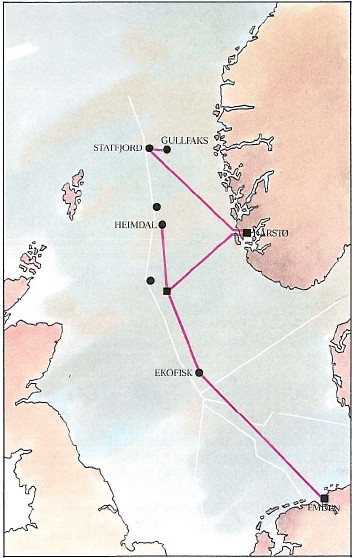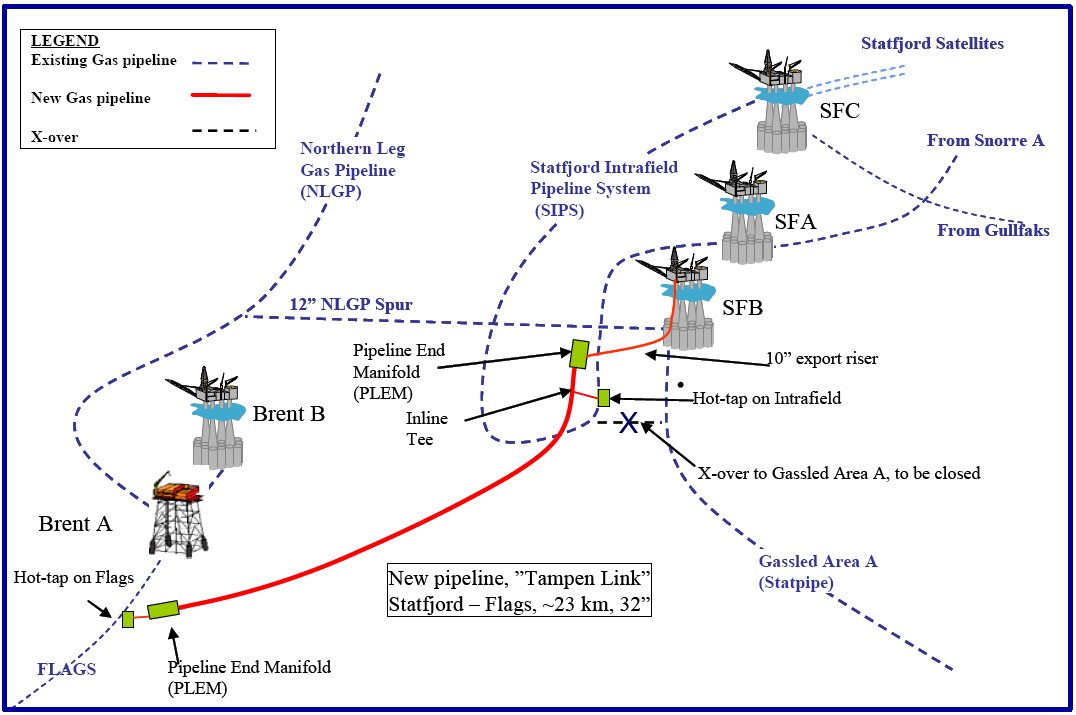Gas pipeline agreements
The sale of gas from Statfjord made it necessary to connect the platforms with flowlines to gather gas for export via the Statpipe system. Oil flowlines also linked the platforms, but these had been installed as part of the field development.

More about society
close
Close

 Gassrøravtaler,
Gassrøravtaler, Gassrøravtaler,
Gassrøravtaler,